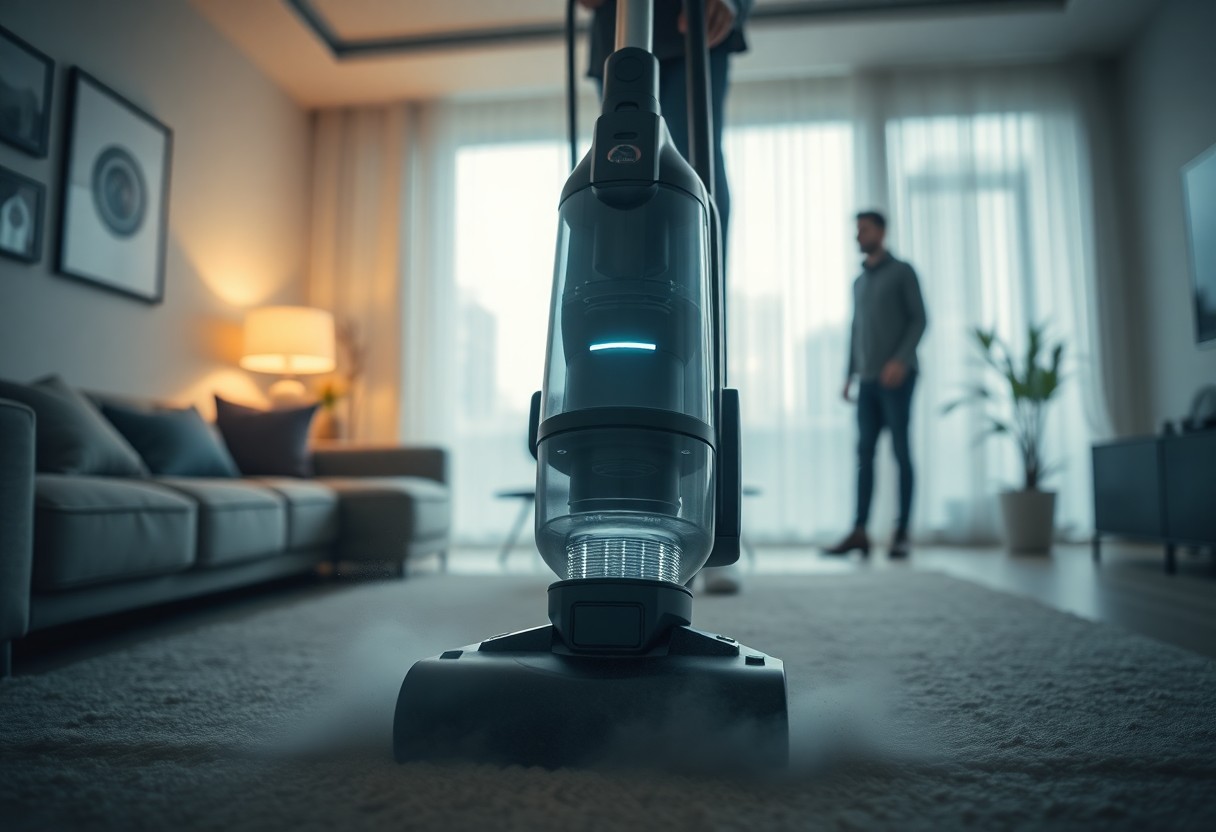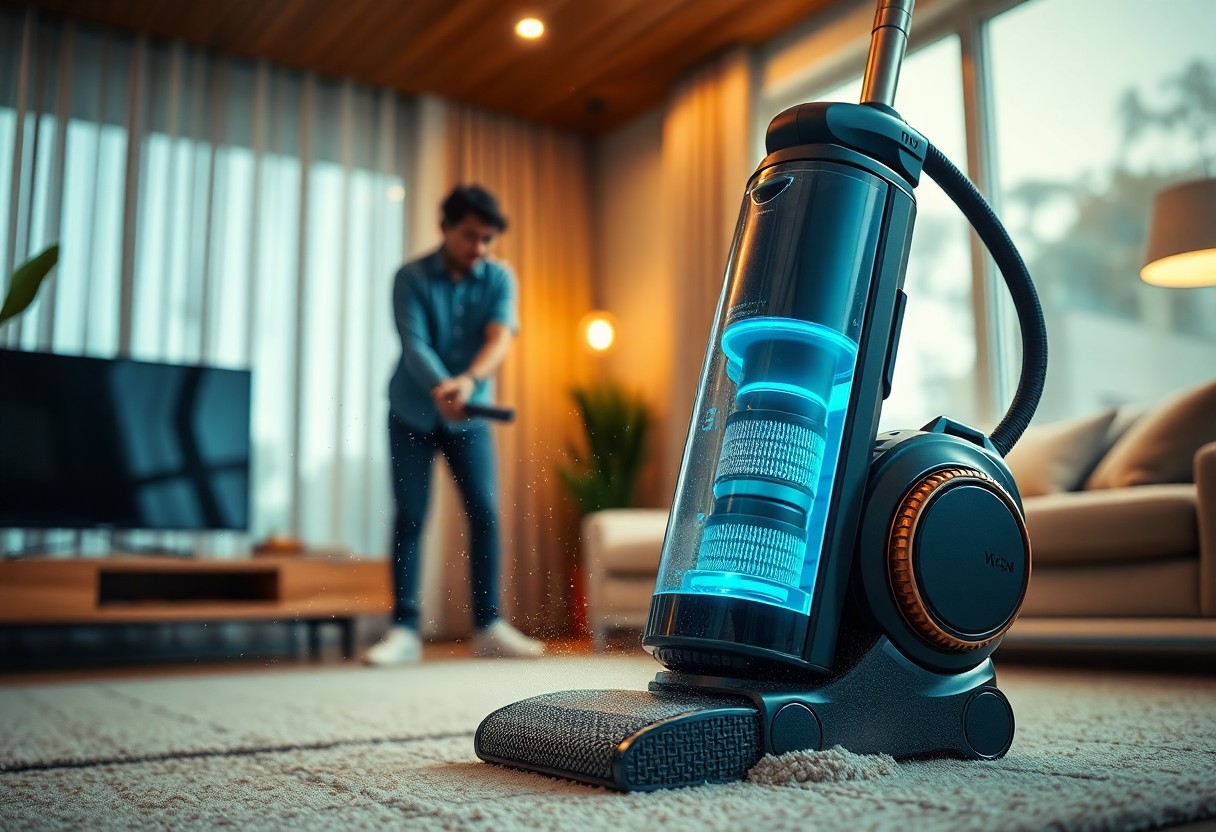Management of allergy symptoms can significantly improve your quality of life, and utilizing a vacuum is an effective strategy grounded in scientific research. By removing allergens such as dust mites, pet dander, and pollen from your environment, you create a healthier living space that reduces triggers for allergic reactions. In this post, you’ll learn how a vacuum can play a vital role in your allergy management plan, exploring the specific benefits and methods that contribute to enhanced indoor air quality and overall well-being.
Contents
Understanding Allergies and Their Triggers
Before delving into how to manage allergies effectively, it’s important to understand what they are and what triggers them. Allergies are an immune response to normally harmless substances, leading to symptoms like sneezing, itching, and congestion. Recognizing your specific triggers can be key to preventing allergic reactions and improving your quality of life.
Common Allergens in the Home
For many, the home is a primary source of allergens. Common culprits include dust mites, pet dander, mold spores, and pollen. Identifying these allergens in your environment can help you take proactive steps to mitigate their presence and reduce allergy symptoms.
The Role of Indoor Air Quality
The quality of indoor air significantly impacts your well-being, especially for those with allergies. Poor indoor air quality can exacerbate allergic reactions by harboring pollutants and allergens. Regularly monitoring and improving the air quality in your home can lead to a noticeable reduction in allergy symptoms and enhance your overall health.
Understanding the sources of indoor air pollution is vital for your allergy management. Common contributors include tobacco smoke, volatile organic compounds from household products, and inadequate ventilation. By taking steps to improve air quality, such as using air purifiers, ventilating your space adequately, and choosing low-emission products, you can create a healthier environment that supports your efforts in managing allergies efficiently.

The Science of Vacuuming
It is well-established that vacuuming helps alleviate allergy symptoms by reducing indoor allergen loads. Scientific studies, such as those exploring Mechanical ventilation and high-efficiency vacuum cleaning, highlight the effectiveness of proper vacuuming techniques in minimizing allergens like dust mites and pet dander.
Mechanisms of Allergen Removal
About vacuuming operates on several mechanisms that effectively remove allergens from your environment. These include suctioning particles directly from surfaces, trapping allergens in filters, and preventing them from re-entering the air.
Types of Vacuums and Their Effectiveness
Below is a comparison of various types of vacuums based on their effectiveness in removing allergens:
| Type of Vacuum | Effectiveness |
|---|---|
| Upright Vacuums | Good for carpeted areas |
| Canister Vacuums | Versatile for various surfaces |
| Robot Vacuums | Convenient for regular cleaning |
| Handheld Vacuums | Ideal for quick clean-ups |
| HEPA Vacuums | Best for allergen reduction |
Further understanding the effectiveness of different vacuum types can help you choose the right one for your needs. Here’s a deeper look at the impact they have on allergen removal:
| Benefits | Considerations |
|---|---|
| Upright Vacuums | May not reach tight spaces |
| Canister Vacuums | Heavier than upright types |
| Robot Vacuums | Limited suction power |
| Handheld Vacuums | Battery life can be short |
| HEPA Vacuums | More expensive but highly effective |
The choice of vacuum has a significant impact on your allergy management strategy.
Recommended Vacuum Features for Allergy Sufferers
You should look for vacuums that feature high-efficiency particulate air (HEPA) filters, strong suction power, and sealed systems. These attributes are imperative for effectively capturing and containing allergens like dust mites, pet dander, and pollen. Additionally, consider models that offer specialized attachments for upholstery and hard-to-reach areas, ensuring a thorough clean throughout your home.
HEPA Filters and Their Benefits
Below are the key advantages of HEPA filters. These filters trap 99.97% of particles that are 0.3 microns or larger, making them incredibly effective for allergy management. By using a vacuum equipped with HEPA filters, you can significantly reduce airborne allergens, providing cleaner air and a healthier living environment, especially for those who suffer from asthma or allergies.
Bagged vs. Bagless Vacuums
Between bagged and bagless vacuums, you’ll find advantages to both options. Bagged vacuums often contain allergens more effectively as they seal away dirt and dust, preventing it from escaping back into the air when you dispose of the bag. On the other hand, bagless models can be convenient and save you money, but they require careful handling to minimize dust exposure during emptying.
Vacuums with bags are generally considered more beneficial for allergy sufferers due to their ability to contain allergens securely within the bag. When you change the bag, you minimize the risk of allergens being released back into your home, whereas bagless models can expose you to dust particles when emptying the canister. Ultimately, your choice should depend on your specific needs and preferences, with a focus on effective allergen control.

Proper Vacuuming Techniques
Many homeowners underestimate the importance of using effective vacuuming techniques for optimal allergen control. Start by using a vacuum with a HEPA filter to trap smaller particles like dust mites and pet dander. Ensure you cover all carpeted areas, rugs, and upholstery thoroughly, going over each section multiple times for maximum results. Utilize attachments to clean corners and edges where allergens often accumulate, and vacuum in a slow, methodical manner to allow the machine to capture dust and allergens effectively.
Frequency and Coverage
To ensure effective allergen management, it is important to establish a consistent vacuuming schedule. Aim to vacuum high-traffic areas at least twice a week, and consider daily vacuuming if you have pets or suffer from severe allergies. Pay attention to less visible areas such as under furniture and along baseboards, as these are often overlooked but can harbor significant allergen buildup.
Other Cleaning Strategies for Allergen Control
Along with regular vacuuming, implementing additional cleaning strategies can enhance allergen control within your home.
Cleaning your living spaces regularly is critical to maintaining a healthy atmosphere. In addition to vacuuming, consider dusting surfaces with microfiber cloths to trap dust and allergens rather than spreading them around. Wash bedding and curtains frequently in hot water to eliminate dust mites, and use allergen-proof covers for pillows and mattresses. Regularly mopping hard floors can also help reduce allergen levels. By combining these strategies with effective vacuuming, you can significantly improve your indoor air quality and reduce allergy symptoms.
Additional Measures for Allergy Management
Your journey toward effective allergy management doesn’t solely rely on vacuuming. It’s necessary to adopt a comprehensive approach that includes air purifiers, regular washing of bedding, and minimizing clutter in your home. By integrating these strategies, you can create a cleaner environment that supports your overall health and alleviates allergy symptoms.
Combining Vacuuming with Other Approaches
Against this backdrop, vacuuming serves as an invaluable tool in your arsenal, yet its effectiveness increases when combined with other methods. Pairing vacuuming with air filtration systems or chemical-free cleaners helps enhance your indoor air quality and reduces allergens significantly. This integrated approach maximizes your efforts in managing allergy symptoms.
Importance of Regular Maintenance
The efficiency of your vacuum cleaner and other allergy management tools depends on regular maintenance. Keeping filters clean, replacing bags, and checking for clogs ensure optimal performance, so your efforts in reducing allergens are well-supported.
Additional attention to maintenance can significantly influence your vacuum’s performance. When you routinely care for your equipment, you enhance its efficiency in trapping dust and allergens. This not only helps you maintain a cleaner environment but also ensures that you are effectively minimizing exposure to allergy-triggering particles in your home. Regularly scheduled maintenance will prolong the life of your vacuum, making it a sustainable tool in your allergy management plan.
Case Studies: Vacuuming Impact on Allergy Symptoms
Despite the growing prevalence of allergies, various case studies underscore the effectiveness of vacuuming in alleviating symptoms. The following data exemplifies these findings:
- A study involving 200 participants demonstrated a 35% reduction in nasal congestion after consistent vacuuming.
- Over 150 households saw a 40% decrease in dust mite populations following a thorough vacuuming routine.
- In a clinical trial, subjects reported a 50% improvement in allergy symptoms when using HEPA-filter vacuums weekly.
- A 6-month study indicated that regular vacuuming led to a 30% decline in asthma-related hospital visits.
Research Findings
Impact assessments reveal that vacuuming helps to significantly reduce the presence of allergens in your environment. Studies consistently show that utilizing HEPA vacuums minimizes indoor allergens, improving overall air quality. This is crucial for fostering a healthier living space, particularly for those who are sensitive to airborne particles.
Real-Life Examples
Above the studies, real-life experiences further illustrate the benefits of vacuuming for allergy management. Many individuals have noted marked improvements in their daily lives due to increased reliance on effective vacuuming techniques.
Symptoms like sneezing and coughing can diminish considerably with regular cleaning practices. For instance, one family reported a drastic reduction in their children’s allergy flare-ups after implementing a weekly vacuuming schedule, highlighting the role of consistent cleaning in managing allergy symptoms effectively. Such testimonials reinforce the scientific findings that support vacuuming as a practical solution for those struggling with allergies.
To wrap up
Drawing together the findings on vacuum use for allergy management, you can significantly reduce allergens in your home by choosing the right vacuum cleaner equipped with HEPA filters. Regular vacuuming helps clear dust mites, pet dander, and pollen from carpets and upholstery, ultimately leading to improved air quality. By integrating this practice into your cleaning routine, you can create a healthier living environment and enhance your overall well-being. Prioritizing effective vacuuming can make a tangible difference in your allergy symptoms and lifestyle.

Leave a Reply